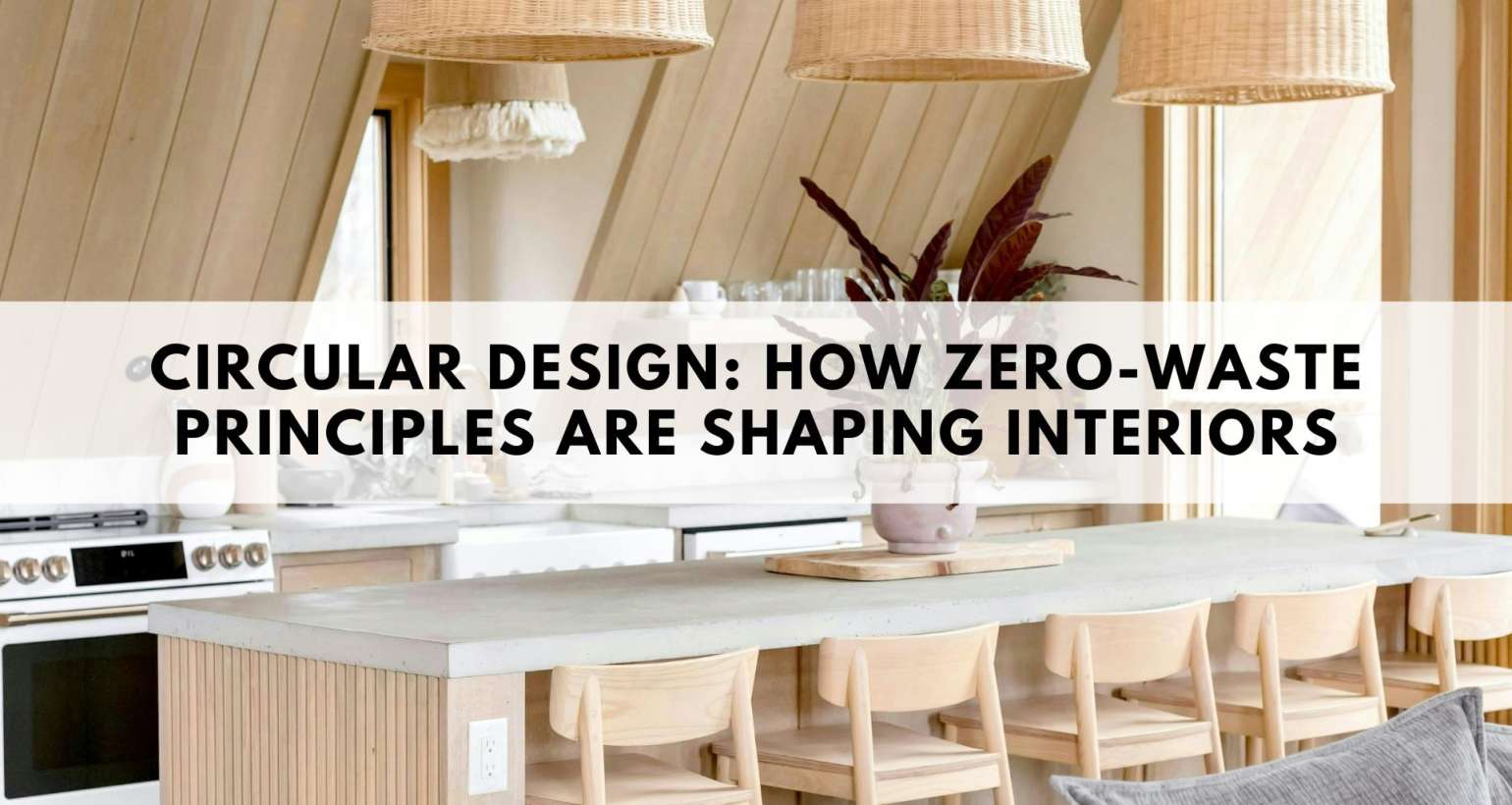The push toward sustainability is not just a trend. It is rethinking the way designers imagine homes, offices, and public spaces. Zero-waste design principles are inspiring more eco-conscious interiors through recycled materials, modular systems, and smart reuse of resources. Let us delve into how these shifts are redefining elegance and ethics in interior design.
Recycled & Upcycled Materials: A New Aesthetic with Old Stories
Designers are turning to materials that would otherwise end up in landfills. Reclaimed wood, recycled glass, and repurposed metals are not just eco-friendly. They bring texture, history, and individuality to spaces. For instance, vintage barn beams become feature stair treads, off-cut terrazzo tiles spark mosaic art, and recycled aluminium panels create bold statement walls. These recycled resources cut down on environmental impact while adding richness to any interior.
Textiles are evolving too. Innovations in sustainable fabrics, like mushroom mycelium leather, pineapple-leaf Piñatex, and cellulose derived from fruit peel, are replacing water-and-chemical heavy synthetic materials. These alternatives give interiors a softer, more natural feel while improving indoor air quality and reducing waste.
Modular & Flexible Pieces: Futures Built to Adapt
One of the key tenets of zero-waste interiors is longevity and adaptability. Modular furniture designs and flexible systems let spaces evolve over time. Instead of tearing things out and discarding them, pieces can be reconfigured, expanded, or disassembled as needs shift. Designers are celebrating modularity, not just as convenience, but as environmental responsibility.
In India, interior architecture firms are transforming plastic waste, including multi-layered plastics (MLP) and single-use plastics, into high-strength construction materials like eco-friendly paver blocks, tiles, and furniture components. The technology they use, the Sand Polymer Technology, relies on low-energy, zero-combustion processing and ensures any air emissions are either captured or neutralized, keeping environmental impact minimal.
Circular Models & Business Practices: Extending Material Life Spans
Circularity is not limited to product choice. It is baked into system design. Take-back programs, rental furniture, and furniture designed for disassembly are moving from niche to mainstream. These models encourage repair, refurbishment, and reuse rather than discard.
Materials like Polygood demonstrate material innovation at scale. Made from 100% recycled plastic panels, Polygood offers durable surfaces that mimic high-end materials while aligning with sustainability certifications like LEED and BREEAM.
Zero-Waste Homes & Architectural Design: From Concept to Reality
Zero-waste architecture is not hypothetical. It is being built. In India, for example, firms are creating homes and commercial spaces using reclaimed bricks, bamboo, hempcrete, and recycled bricks. These designs often feature natural lighting, ventilation, and construction techniques that make future deconstruction simpler.
In Europe, modular housing and structures are being constructed so that individual components can be recycled or repurposed at end of life. Architectural projects like Open Structures embrace modular grids that allow for parts to be shared, replaced, or redesigned without starting from scratch.
Designing Spaces That Tell Stories & Connect with Values
What makes zero-waste interiors powerful is not simply materials they use. It is the stories these designs tell. Each upcycled beam or reclaimed floorboard carries history. Every reuse choice nods to values of care, responsibility, and mindfulness. Spaces become not just beautiful but meaningful. When interiors are made from materials that once lived another life, occupants can feel more grounded, more connected to purpose.
Closing Thoughts
Designers today are proving that circular interiors are not about sacrificing beauty. They are about reimagining it. By choosing materials that respect resources, embracing modular and flexible design, and adopting circular business models, the industry is changing in a big way. Homes, offices, hospitality spaces, all are being reconceptualized so that waste, cost, and environmental impact shrink while character, function, and beauty grow. Zero-waste is not a mere principle. It has become an invitation to design that leaves none behind.

